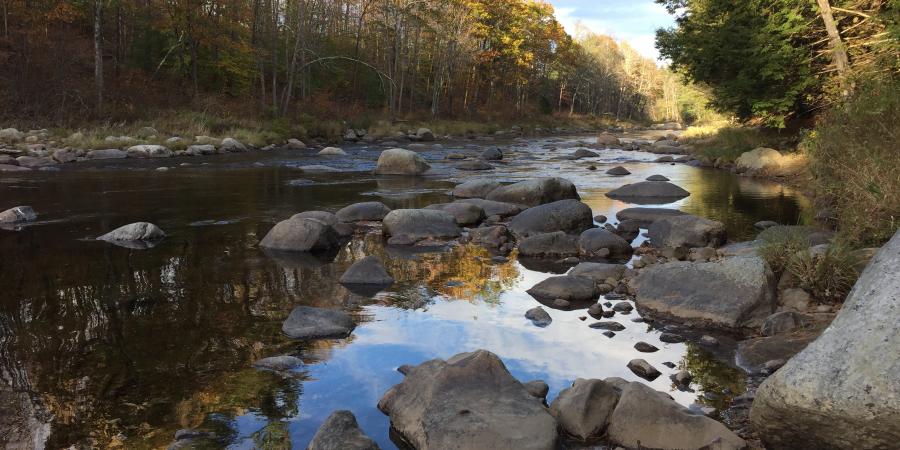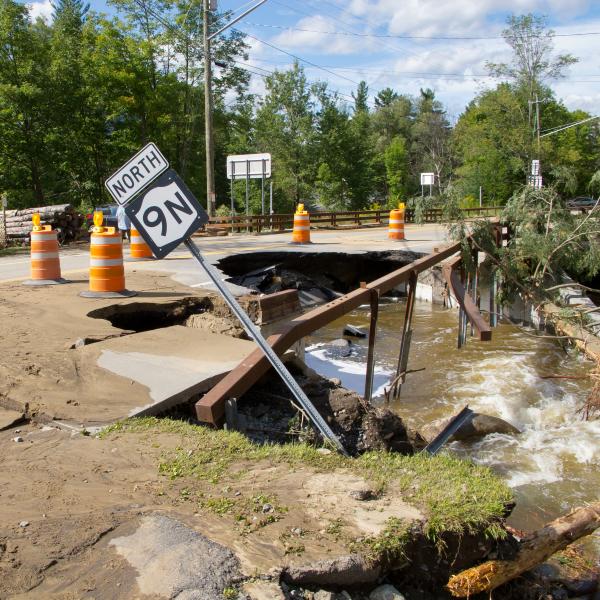At the Ausable River Association, our staff monitors the health of our waterways and shares what we learn with the community. Our goal is to understand changes and, where challenges to water quality arise, to find practical solutions. One current focus of our monitoring tracks two pollutants, chloride and sodium. Both enter streams and lakes as a result of winter road deicing practices. We’re also on the lookout for other changes and track long-term trends.
Every other week, our water quality associate travels throughout the Ausable River watershed to gather water quality data and to search for elevated levels of these two pollutants. There are 30 stream monitoring sites that range from developed lands along roadways to pristine wilderness areas. In the summer months we're also monitoring water quality in eight lakes, again, checking sodium and chloride levels, but also recording long-term trends for temperature and dissolved oxygen and keeping an eye out for new threats.
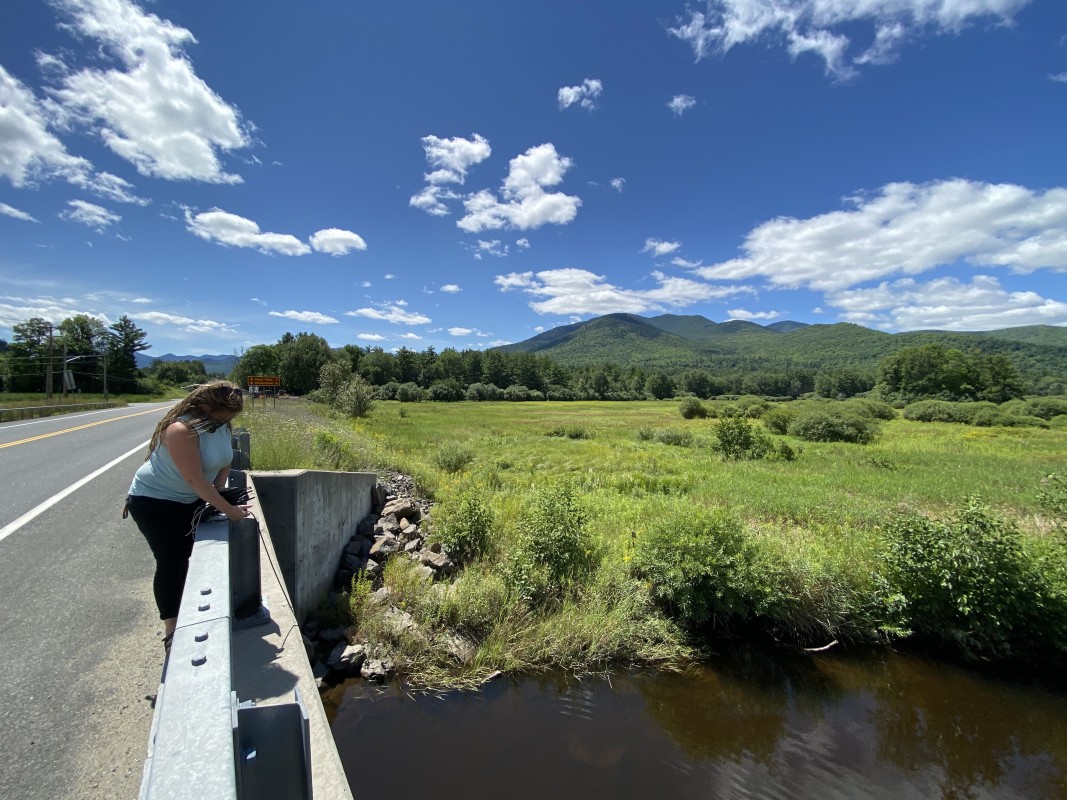
Carrianne at one of our monitoring sites using the YSI Probe to record water quality parameters.
To monitor water quality, we use a YSI multi-parameter probe. A YSI probe is a sensitive, portable water quality instrument that can gather data on multiple critical parameters such as dissolved oxygen, pH, conductivity, specific conductance, total dissolved solids, and temperature. A handheld computer unit is attached by a long electrical cable to a probe that holds multiple sensors. The probe is placed into the water, the readings stabilize, and then the levels are recorded.
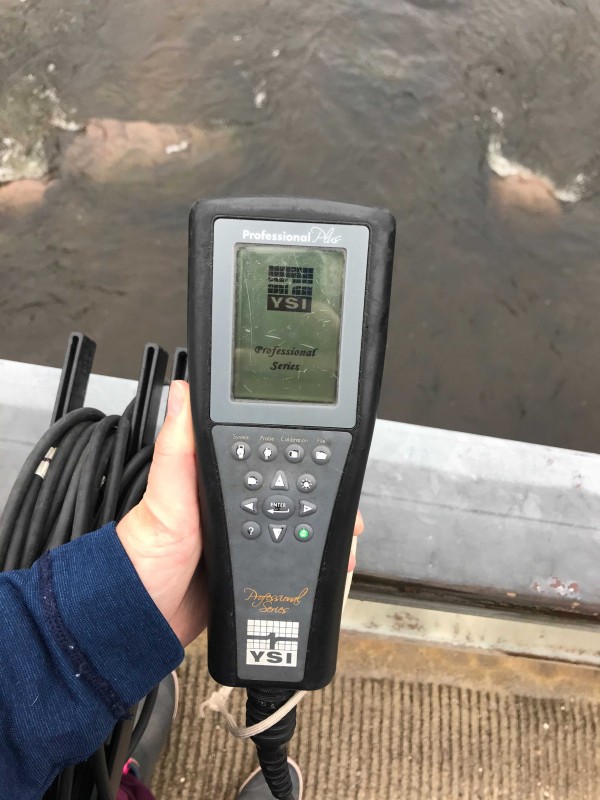
YSI water quality instrument screen.
Each parameter provides insight into the quality of the water moving through the watershed. A deep look into the parameters can provide information on the overall health of the watershed and where contamination or sources of pollution may be coming from. But what precisely are each of these parameters about?
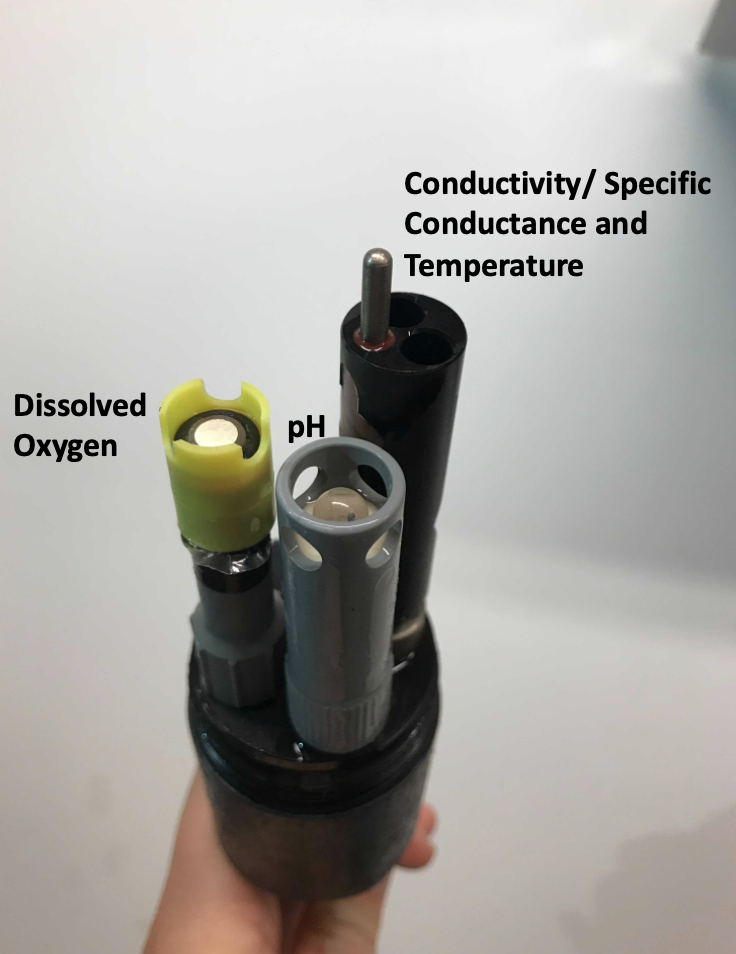
Sampling end of the YSI probe with labeled sensors.
Dissolved oxygen: The measure of how much oxygen is dissolved in water, or the amount that is available to living aquatic organisms. Levels in rivers such as the Ausable are typically high due to the turbulent water flow. However, increases in soluble elements, excessive bacterial growth due to elevated nutrient inputs, or higher water temperatures, can cause decreases in dissolved oxygen. The solubility of oxygen in water is directly related to temperature and salinity and decreases as the others increase.
pH: A measure of acidity. pH is an index of the hydrogen ion activity in solution. High pH values represent low hydrogen ion concentrations while low pH values represent high hydrogen ion concentrations. The pH scale extends from 0 to 14, with 7 being neutral. pH values below 7 indicate acidic conditions and pH values greater than 7 indicate alkaline or basic conditions. Acidity in Adirondack surface waters are a result of acid deposition (rain, snow, and dry deposition) and/or organic acids from evergreen needles and other plant matter. pH is an important water quality parameter because many organisms have narrow pH tolerances and it influences the solubility of various chemical substances, particularly heavy metals.
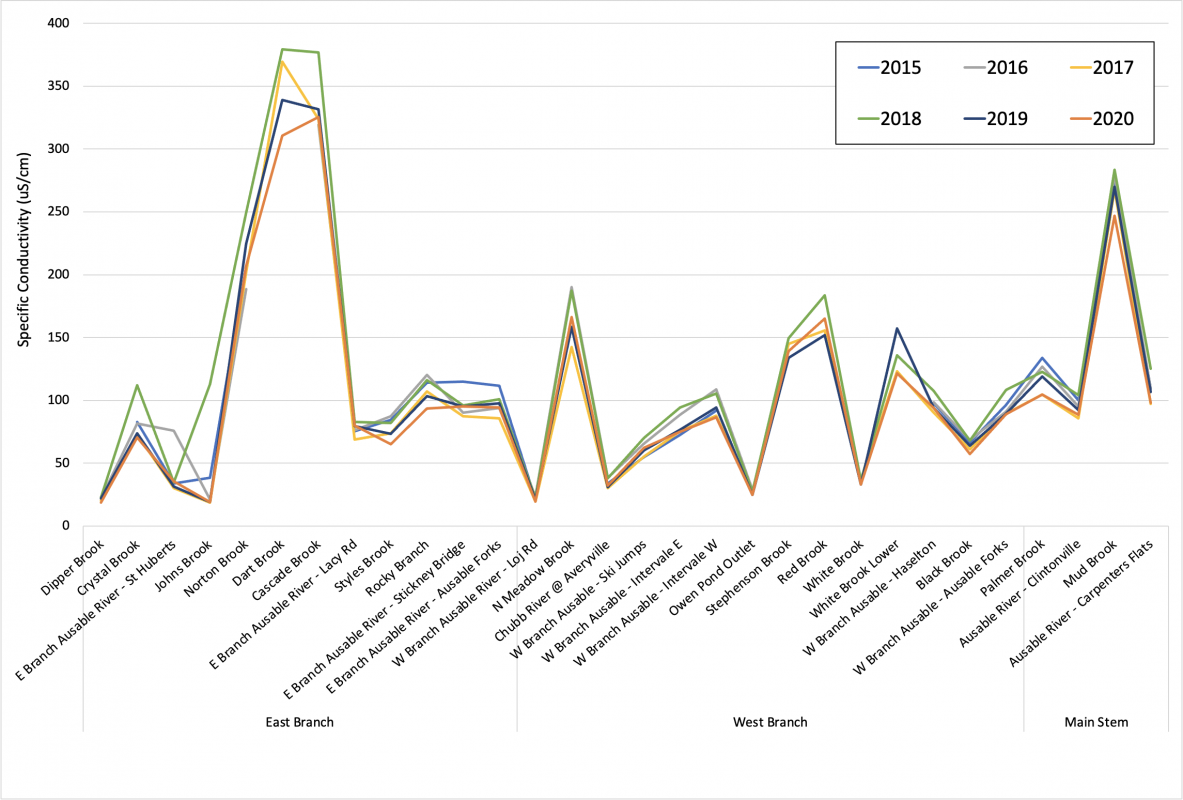
Average specific conductivity for each site by year organized by location from East Branch Ausable River and West Branch Ausable River to main stem Ausable River. For each section of the river, sites are located upstream to downstream from left to right.
Conductivity and Specific Conductance: The ability of water to pass an electrical current because of the presence of dissolved ions. It’s often called the “watchdog” environmental test since it is informative and easy to perform. Calculations of specific conductance standardize conductivity measurements to the temperature of 25 °C for the purposes of comparison. Rain, erosion, snow melt, runoff carrying livestock waste, failing septic systems, and road salt all raise conductivity because of the presence of ions such as chloride, phosphate, nitrite etc. Temperature, shade, sunlight, and sampling depth all affect conductivity. A conductivity probe does not identify the specific ions in a water sample, it simply measures the level of total dissolved solids in the water body.
Support our water quality monitoring work for clean water and healthy streams. Give with confidence today!
Total dissolved solids (TDS): A measure of all the organic and inorganic substances in water including minerals, salts, and organic matter. Agricultural and urban runoff can carry minerals, as can wastewater and salt that is used to deice roads. Total dissolved solids indirectly measures the salinity of water, as water with higher TDS has more dissolved solids. TDS is used as a general indicator of water quality but does not provide insight into the specific water quality issue.
Temperature: Stream water temperatures are a function of regional climate, geology, soil type, and riparian cover. Temperature influences biological activity and growth, affects water chemistry, solubility, and controls water quality measurements. It also helps to identify long term trends and changes related to climate change. Chemical reaction rates typically increase at higher temperatures. Water with higher temperatures can dissolve more minerals, affecting electrical conductivity. Warmer water temperatures hold less dissolved oxygen than cool water.
The water quality monitoring program at the Ausable River Association has been ongoing since 2015. It's one part of our clean water program and is essential to understanding challenges to water quality in the Ausable River, seasonal differences in waterways throughout the watershed, and evaluating and quantifying our efforts to protect and restore our streams and lakes.
Story and photos by Leanna Thalmann, Water Quality Associate.
Sign-up for our e-newsletter to get weekly updates on the latest stories from the Ausable River Association.
